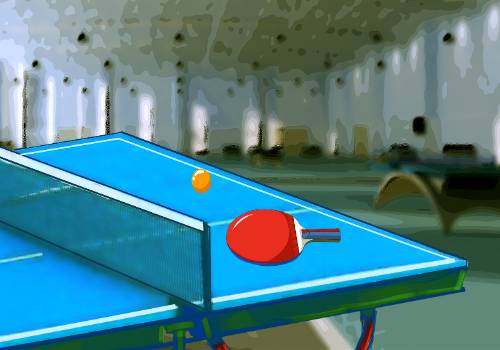来源:Xinhua 时间:2023-08-08 21:06:08
This photo taken on Aug. 5, 2023 shows a photocopy of a document from a Japanese army hospital that cooperated with Unit 731, a Japanese germ warfare army during World War II, in Mudanjiang City, northeast China"s Heilongjiang Province. An original material from a Japanese army hospital that cooperated with Unit 731, a Japanese germ warfare army during World War II, has gone on public display for the first time in Mudanjiang City, northeast China"s Heilongjiang Province.
 【资料图】
【资料图】
The material on display is composed of 17 documents, with a total of 36 pages, and features the hospital"s information from its establishment on July 16, 1941 to Oct. 11, 1945. The hospital could accommodate about 7,200 patients.
The material is of great significance for research into the Japanese army hospital, which was implicated in conducting vivisections, according to the Exhibition Hall of Evidences of Crime Committed by Unit 731 of the Japanese Imperial Army, which is located in Harbin, capital of Heilongjiang. (Xinhua/Zhang Tao)
HARBIN, Aug. 7 (Xinhua) -- An original material from a Japanese army hospital that cooperated with Unit 731, a Japanese germ warfare army during World War II, has gone on public display for the first time in Mudanjiang City, northeast China"s Heilongjiang Province.
The material is of great significance for research into the Japanese army hospital, which was implicated in conducting vivisections, according to the Exhibition Hall of Evidences of Crime Committed by Unit 731 of the Japanese Imperial Army, which is located in Harbin, capital of Heilongjiang.
The hospital in Harbin was the largest army hospital established by the Japanese army in northeast China, with advanced medical treatment instruments and operating rooms, and assumed the functions of treating and transporting wounded patients, said Jin Shicheng, a researcher with the exhibition hall.
The material on display is composed of 17 documents, with a total of 36 pages, and features the hospital"s information from its establishment on July 16, 1941 to Oct. 11, 1945. The hospital could accommodate about 7,200 patients.
"According to the data, the hospital was an extension of the medical crime of Unit 731. It was closely related to Japanese germ warfare since the beginning of its preparation, and was an important participant and associate of such warfare," Jin said.
"The study found that human experiments and germ warfare carried out by Unit 731 were assisted by Japanese wartime medical institutions," said Jin Chengmin, curator of the exhibition hall.
"This once again proves that the Japanese invasion of China was a top-down, organized and planned group crime carried out by Japanese militarism," he added.
Unit 731 was a top-secret biological and chemical warfare research base established in Harbin as the nerve center for Japanese biological warfare in China and Southeast Asia during World War II.■
This photo taken on Aug. 5, 2023 shows a photocopy of a document from a Japanese army hospital that cooperated with Unit 731, a Japanese germ warfare army during World War II, in Mudanjiang City, northeast China"s Heilongjiang Province. An original material from a Japanese army hospital that cooperated with Unit 731, a Japanese germ warfare army during World War II, has gone on public display for the first time in Mudanjiang City, northeast China"s Heilongjiang Province.
The material on display is composed of 17 documents, with a total of 36 pages, and features the hospital"s information from its establishment on July 16, 1941 to Oct. 11, 1945. The hospital could accommodate about 7,200 patients.
The material is of great significance for research into the Japanese army hospital, which was implicated in conducting vivisections, according to the Exhibition Hall of Evidences of Crime Committed by Unit 731 of the Japanese Imperial Army, which is located in Harbin, capital of Heilongjiang. (Xinhua/Zhang Tao)
A researcher presents a photocopy of a document from a Japanese army hospital that cooperated with Unit 731, a Japanese germ warfare army during World War II, in Mudanjiang City, northeast China"s Heilongjiang Province, Aug. 5, 2023. An original material from a Japanese army hospital that cooperated with Unit 731, a Japanese germ warfare army during World War II, has gone on public display for the first time in Mudanjiang City, northeast China"s Heilongjiang Province.
The material on display is composed of 17 documents, with a total of 36 pages, and features the hospital"s information from its establishment on July 16, 1941 to Oct. 11, 1945. The hospital could accommodate about 7,200 patients.
The material is of great significance for research into the Japanese army hospital, which was implicated in conducting vivisections, according to the Exhibition Hall of Evidences of Crime Committed by Unit 731 of the Japanese Imperial Army, which is located in Harbin, capital of Heilongjiang. (Xinhua/Zhang Tao)
This photo taken on Aug. 5, 2023 shows a photocopy of a document from a Japanese army hospital that cooperated with Unit 731, a Japanese germ warfare army during World War II, in Mudanjiang City, northeast China"s Heilongjiang Province. An original material from a Japanese army hospital that cooperated with Unit 731, a Japanese germ warfare army during World War II, has gone on public display for the first time in Mudanjiang City, northeast China"s Heilongjiang Province.
The material on display is composed of 17 documents, with a total of 36 pages, and features the hospital"s information from its establishment on July 16, 1941 to Oct. 11, 1945. The hospital could accommodate about 7,200 patients.
The material is of great significance for research into the Japanese army hospital, which was implicated in conducting vivisections, according to the Exhibition Hall of Evidences of Crime Committed by Unit 731 of the Japanese Imperial Army, which is located in Harbin, capital of Heilongjiang. (Xinhua/Zhang Tao)
This photo taken on Aug. 5, 2023 shows a photocopy of a document from a Japanese army hospital that cooperated with Unit 731, a Japanese germ warfare army during World War II, in Mudanjiang City, northeast China"s Heilongjiang Province. An original material from a Japanese army hospital that cooperated with Unit 731, a Japanese germ warfare army during World War II, has gone on public display for the first time in Mudanjiang City, northeast China"s Heilongjiang Province.
The material on display is composed of 17 documents, with a total of 36 pages, and features the hospital"s information from its establishment on July 16, 1941 to Oct. 11, 1945. The hospital could accommodate about 7,200 patients.
The material is of great significance for research into the Japanese army hospital, which was implicated in conducting vivisections, according to the Exhibition Hall of Evidences of Crime Committed by Unit 731 of the Japanese Imperial Army, which is located in Harbin, capital of Heilongjiang. (Xinhua/Zhang Tao)

Across China: New evidence of Japanese germ warfare unit made public

三星Galaxy Z Flip5铰链寿命出炉:手工折叠33.5万次终于坏了

weyvv7gt(weyvv7是哪里的车?)

好消息!汤家浜、水渡浜等河道整治工程完成竣工验收!

2023山东济宁市汶上经济开发区管理委员会选聘工作人员笔试准考证

与大摩、小摩唱反调!花旗:美股有望因仓位风险下降而上涨

中国7月出口大降13.6%,碧桂园引发地产股大跌,外资抛售A股跳水

长安汽车:自主品牌新能源7月销量3.95万辆,同比增加68.89%

乐健康|夏秋之交“火气太旺”怎么办?立秋养生提示!类风湿关节

2023和平精英城市赛道省赛-安徽站圆满落幕

想去快船?哈登最后的归属其实早已注定!

禁止进入!珠江口部分海域进行军事活动

方盛制药(方盛制药2019年财务报告分析)

Excel中Ctrl+1键用法攻略

豆丁网怎么免费下载 豆丁网怎么免费下载付费PPT

米黄玉 蜜蜡 区别

银河磁体:公司产品包括粘结钕铁硼磁体、热压钕铁硼磁体、钐钴磁

科研成果与科学新闻的张力






安泰集团(600408)6月7日主力资金净买入22.05万元


2018款牧马人外挂式备胎介绍及2018款牧马人轮胎型号尺寸多少 焦点快播